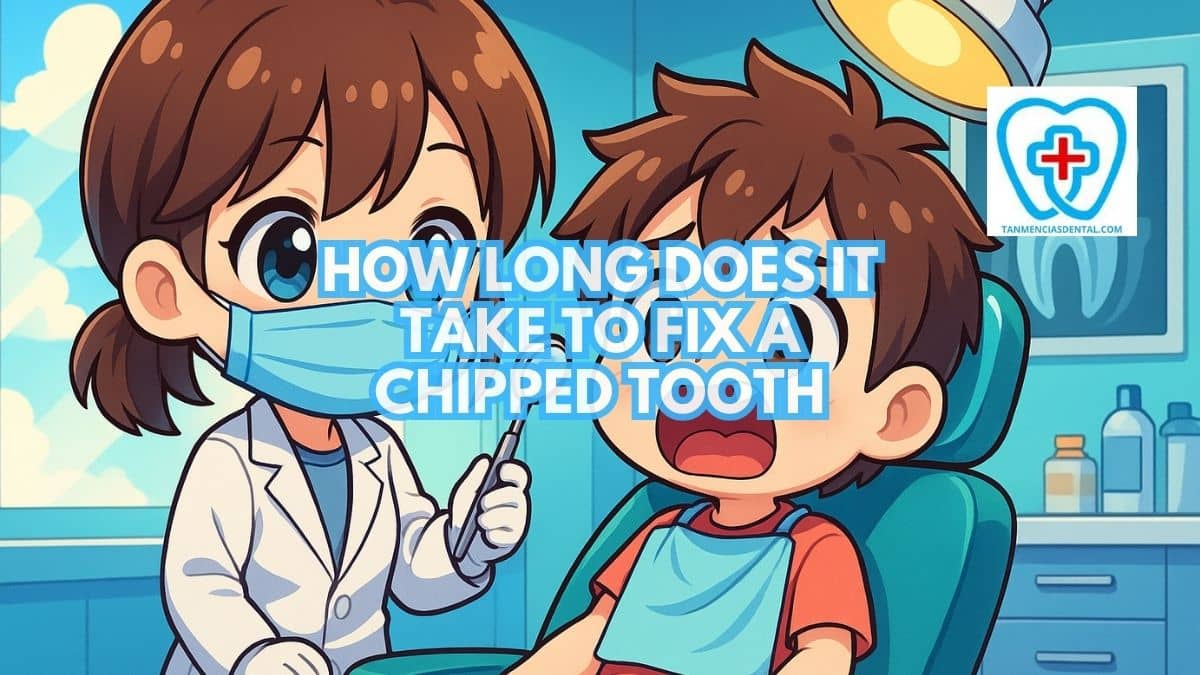A chipped tooth often causes concerns about appearance, pain, and potential dental health issues.
Knowing how quickly a dentist can fix this type of damage provides comfort and clarity.
Different treatments for chipped teeth vary widely in terms of the time required.
The extent of the damage and the specific treatment both play major roles in timing.
Understanding the process helps you prepare for what to expect.
1. Factors Affecting Repair Time
The severity of the chip is a major factor in how quickly it can be fixed.
Treatment methods vary—some are done in one visit, while others take weeks.
Dentist availability also plays a role in scheduling the first appointment and any follow-ups.
Your general oral health and any existing issues can influence how well and how fast your tooth responds to treatment.
In some cases, infections or nerve exposure can extend the time needed for complete repair.
🦷 How Much to Fix A Chipped Tooth Without Insurance?
2. Initial Dental Examination And X-Rays
The repair process begins with a dental exam and X-rays, usually lasting 30 to 60 minutes.
These tools help the dentist see if the tooth’s root or nerve is affected.
A full evaluation allows the dentist to plan the most effective repair.
The exam also helps identify any other issues that might delay treatment.
A clear diagnosis at this stage is key to choosing the best and quickest solution.
🦷 How Long Does It Take to Fill Cavities?
3. Importance Of Prompt Treatment
Acting quickly after chipping a tooth helps prevent more serious problems.
Waiting too long may lead to worsening cracks, infections, or damage to nearby teeth.
Fast treatment lowers the chance of needing complex or costly procedures.
It can also reduce pain and sensitivity before they get worse.
Timely care keeps the tooth stronger and more stable.
🦷 How Do Dentists Get Rid of Cavities?
4. Dental Bonding For Minor Chips
Dental bonding is often used for small chips and can usually be completed in one visit.
It involves placing a tooth-colored resin on the chip and shaping it to match your natural tooth.
The dentist then hardens the material with a special light to make it strong.
The process takes 30 to 60 minutes and is usually painless.
Patients can eat and drink normally soon after the procedure.
🦷 How Do You Rinse After Whitening Strips for Best Results?
5. Veneers For Moderate Chips
Veneers are thin porcelain layers placed over the front of the tooth, ideal for moderate chips.
The first visit includes shaping the tooth and taking impressions, taking about one to two hours.
Temporary veneers may be added while the permanent ones are made in a lab.
The second visit is for attaching the final veneers with dental adhesive.
Veneers offer a lasting, natural-looking fix and usually require two appointments.
🦷 How to Clean Braces for a Smile That Rocks: Don’t Let Food Get Stuck!
6. Crowns For Severe Chips
Crowns cover the entire tooth and are used when a chip is large or affects the tooth structure.
The first visit includes tooth shaping and taking molds, lasting up to two hours.
A temporary crown is placed while the final one is made, which takes one to three weeks.
The second visit involves fitting and securing the permanent crown.
Crowns are strong, long-lasting, and restore both function and appearance.
🦷 Why Guest Toothbrushes Are Essential for Polite Hosting
7. Root Canal Treatment When Needed
If the chip reaches the tooth’s pulp or nerve, a root canal is necessary before repair.
This procedure removes damaged tissue and disinfects the tooth.
It may require one or two visits, each lasting one to two hours.
Afterward, a crown is usually added to protect the treated tooth.
Though it adds time, a root canal can save a tooth that would otherwise need removal.
🦷 Why Do Permanent Dental Implants Cost Vary So Much Between Clinics?
8. Pain And Sensitivity Issues
Chipped teeth may hurt or feel sensitive, especially with hot or cold foods.
Quick repair usually stops discomfort early.
After treatment, any lingering sensitivity should fade within a few days.
Dentists might suggest special toothpaste to help ease symptoms.
Fixing the chip also helps avoid further irritation or damage.
🦷 How Often Should You Use Teeth Whitening Strips?
9. Cosmetic And Functional Benefits Of Repair
Fixing a chipped tooth improves your smile and helps you feel more confident.
It also restores proper chewing and reduces uneven pressure on other teeth.
Repairing the chip helps prevent it from getting worse or breaking more.
A repaired tooth is easier to clean and keep healthy.
Both looks and function improve after treatment.
🦷 Brushing Bliss or Brushing Bust? The Truth About Over-Brushing Teeth
10. Longevity Of Different Repair Methods
Bonding typically lasts 5 to 10 years, depending on wear and care.
Veneers can last up to 15 years with good dental habits.
Crowns often stay intact for 15 to 20 years or longer.
A root canal followed by a crown can protect a tooth for decades.
Regular checkups and cleanings help all repairs last longer.
🦷 Marikina’s Expert Dental Care Providers
👨⚕️ Conclusion
The time it takes to fix a chipped tooth depends on the damage and the type of repair.
Minor chips may be fixed in one visit, while serious ones may take weeks.
Early care shortens treatment time and avoids further problems.
Good dental habits afterward help repairs last.
Talk to your dentist as soon as possible to find the best solution for your tooth.
😊 Self-Promotion
Come visit us at Tan-Mencias Dental Clinic, located at 44 G. Del Pilar Street, Parang, Marikina City.
Our friendly team is ready to help you with chipped teeth, cleanings, and other dental needs.
If you have questions, you can call us at 0917-145-1074.
You can also send us a message on our Facebook page or use the contact form on our website.
We’re here to make sure your smile stays healthy and bright!

